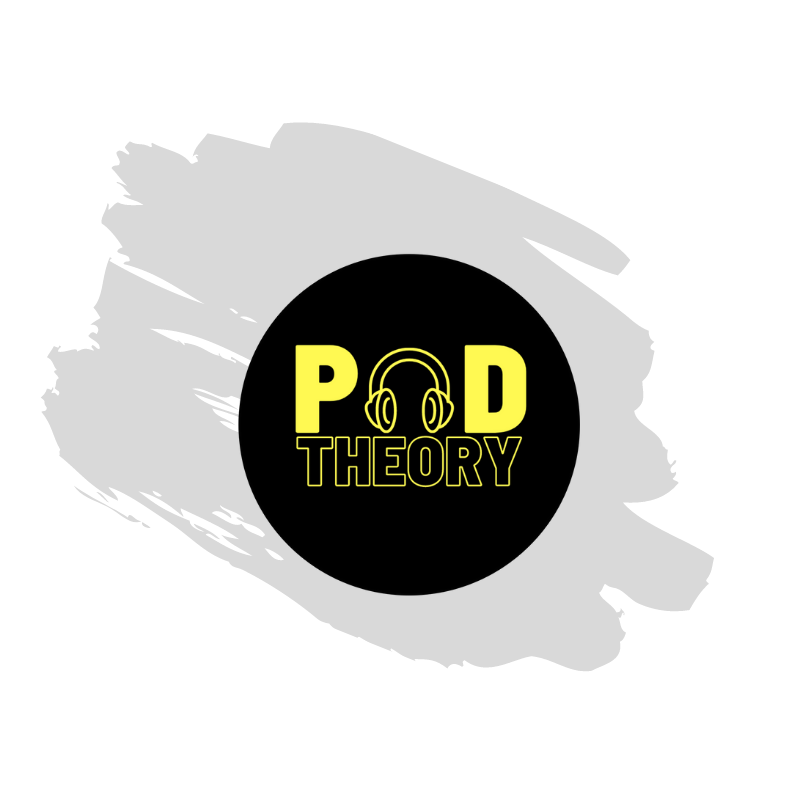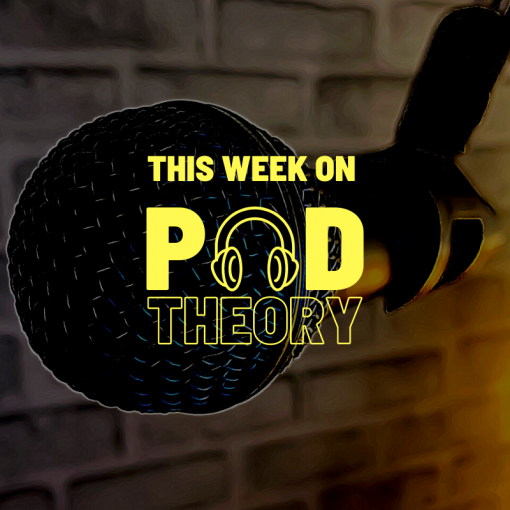
This Week On Pod Theory, I’m covering how to produce quality podcast intros and outros, how to structure your podcast episodes, places you can network with other podcasters, and where your money is best spent on your podcast. Episodes 51-55 can be listened to below or you can subscribe to Pod Theory wherever you listen to your podcasts.
Episode 51: How to Produce a Quality Podcast Intro
How do you make a first impression on your listener? From a visual standpoint, your podcast art, show title, and show description should paint a pretty clear picture of what a listener is about to experience as they dive into your show.
From an audio standpoint, your podcast intro is the first thing a listener is going to hear to connect them with your podcast. You want to be sure you use this space to create something that’s impactful and memorable while, at the same time, informs your listener who you are, what your podcast is about, and what they’ll gain by listening to the episode that lays ahead.
On Episode 51 of Pod Theory, I’m going to cover how you can produce a quality intro for your podcast. One that gets stuck in someone’s head, fits into the appropriate timeframe, lets your listener know what your show is all about, and why the content you’re about to share is going to help them solve a problem, learn something new, or provide them with the entertainment they seek.
Episode 52: How to Structure Your Podcast Episodes
Structure isn’t always the sexiest subject to cover. But when you think about it, if we didn’t live in a world with some semblance of structure, life would be chaos.
Likewise, a podcast without structure will come off as chaotic to your audience. Listeners come to depend on a certain level of predictability with the shows they follow. And for you, having a structure in place for your episodes will allow you to deliver content in a desirable way, get more listeners hooked on your efforts, and maximize your creativity from the beginning of your podcast to the end. Plus, structure will simplify your post-production efforts, allowing you to focus your time on other initiatives that help your podcast grow.
In Episode 52 of Pod Theory, I’m going to share some insights on how to structure your podcast episodes. Whether you record solo, feature guests, or have multiple co-hosts on the mics, following a basic structure will make for a better final production. Your podcast is your pulpit for storytelling…and a good story, from front to back, always has structure.
Episode 53: How to Produce a Quality Podcast Outro
As your podcast episode reaches its conclusion, the most important thing for you to do is give your listener something to do. Something that keeps them connected to you and your brand. Something that enhances your efforts. This is called a Call to Action, or CTA.
On Episode 53 of Pod Theory, I’m going to help you craft a quality, meaningful outro for your podcast. From choosing the right CTA to inviting your listeners back for your next show, making sure you have all your bases covered with your outro will result in a lasting impression that stays with your listener until your next podcast episode releases.
Episode 54: 3 Great Places to Network With Other Podcasters
With over a million podcasts going strong in today’s podcast space, there are millions of people for you to connect with, learn from, and support. Every one of us is doing something different with our podcasting approaches. And learning from each other is going to help us all grow and thrive in the podcasting world.
Networking has always been one of the most powerful tools in any professional’s arsenal. Having the ability to meet other like-minded people in a multitude of different environments opens up limitless potential for growth and success. Connecting with other professionals gives you opportunities to collaborate, share ideas, find solutions, and generate referrals – both incoming and outgoing.
On Episode 54 of Pod Theory, I’m going to share three networks I’ve been using to network with other podcasters. In the days of the coronavirus pandemic, this networking is taking place in a digital capacity. That said, networking via the world wide web is just as powerful and the podcasters you meet through these platforms truly have a lot to offer.
Episode 55: Where is Your Money Best Spent On Your Podcast?
At some point in your podcasting plight, money will need to be invested in your efforts. Whether it be on recording equipment, advertising, voice-overs, art, hosting, or other aspects that bring your show to life, you can’t make your podcast come together without spending SOME money.
The good news is, starting a podcast is not an expensive proposition. In fact, once you purchase your equipment and take care of your startup costs, expenses going forward are very manageable. Like any initiative you embark upon, you’ll need to determine how much you can invest into your podcast on a monthly basis and, from there, decide what areas will provide the most return on said investment.
On Episode 55 of Pod Theory, I’m going to provide my thoughts on the three best places to spend your money when it comes to your podcast. Each will provide a boost to your efforts and help your podcast expand at a more rapid pace. We’ll also go over a basic budget and what you should be doing before you start investing your money into paid advertising.
Listen & Subscribe to Pod Theory
Apple Podcasts | Spotify | Google Podcasts | Stitcher | Amazon Music | iHeartRadio | Podchaser



